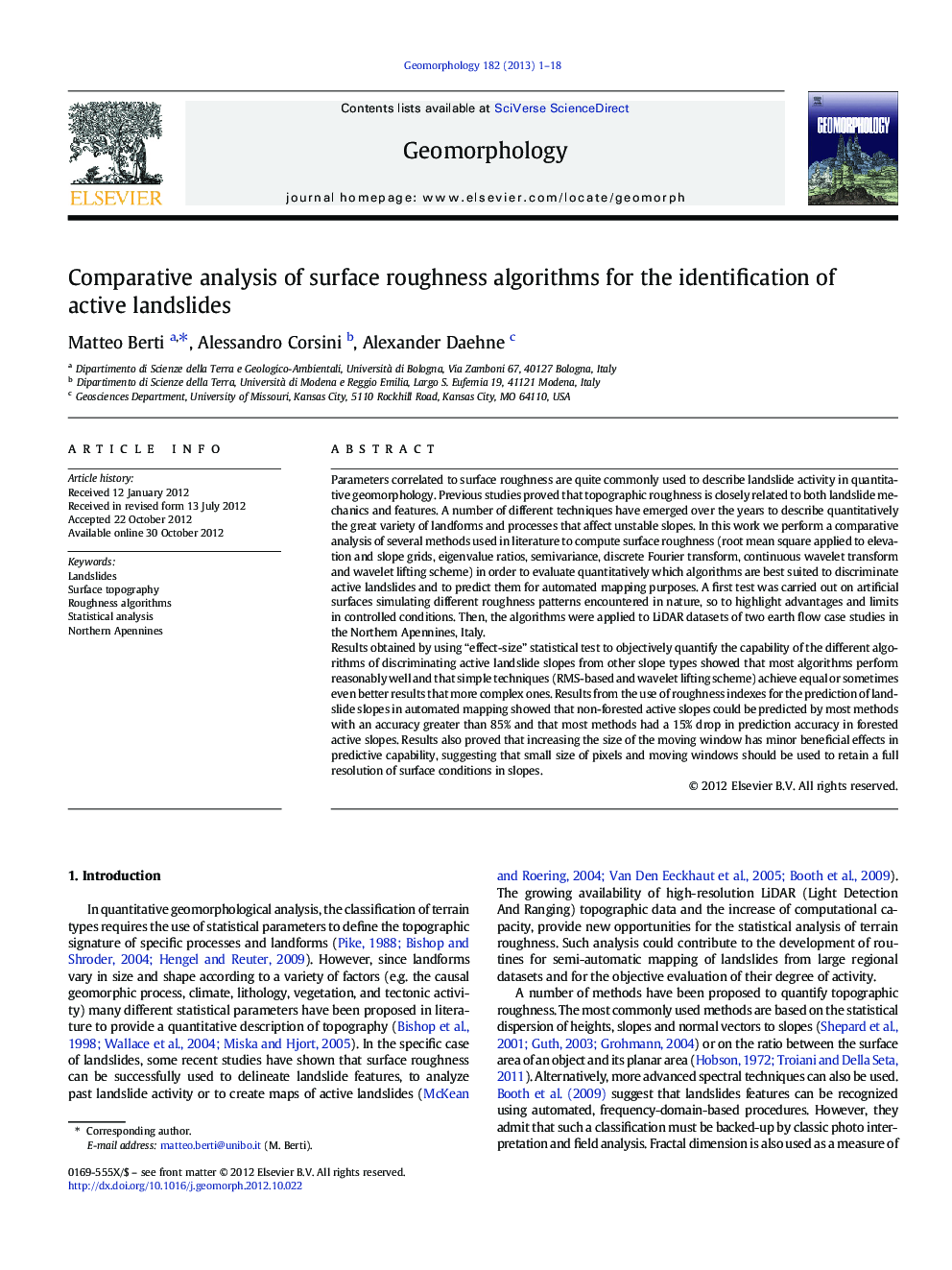| کد مقاله | کد نشریه | سال انتشار | مقاله انگلیسی | نسخه تمام متن |
|---|---|---|---|---|
| 4685031 | 1635467 | 2013 | 18 صفحه PDF | دانلود رایگان |
Parameters correlated to surface roughness are quite commonly used to describe landslide activity in quantitative geomorphology. Previous studies proved that topographic roughness is closely related to both landslide mechanics and features. A number of different techniques have emerged over the years to describe quantitatively the great variety of landforms and processes that affect unstable slopes. In this work we perform a comparative analysis of several methods used in literature to compute surface roughness (root mean square applied to elevation and slope grids, eigenvalue ratios, semivariance, discrete Fourier transform, continuous wavelet transform and wavelet lifting scheme) in order to evaluate quantitatively which algorithms are best suited to discriminate active landslides and to predict them for automated mapping purposes. A first test was carried out on artificial surfaces simulating different roughness patterns encountered in nature, so to highlight advantages and limits in controlled conditions. Then, the algorithms were applied to LiDAR datasets of two earth flow case studies in the Northern Apennines, Italy.Results obtained by using “effect-size” statistical test to objectively quantify the capability of the different algorithms of discriminating active landslide slopes from other slope types showed that most algorithms perform reasonably well and that simple techniques (RMS-based and wavelet lifting scheme) achieve equal or sometimes even better results that more complex ones. Results from the use of roughness indexes for the prediction of landslide slopes in automated mapping showed that non-forested active slopes could be predicted by most methods with an accuracy greater than 85% and that most methods had a 15% drop in prediction accuracy in forested active slopes. Results also proved that increasing the size of the moving window has minor beneficial effects in predictive capability, suggesting that small size of pixels and moving windows should be used to retain a full resolution of surface conditions in slopes.
Journal: Geomorphology - Volume 182, 15 January 2013, Pages 1–18
